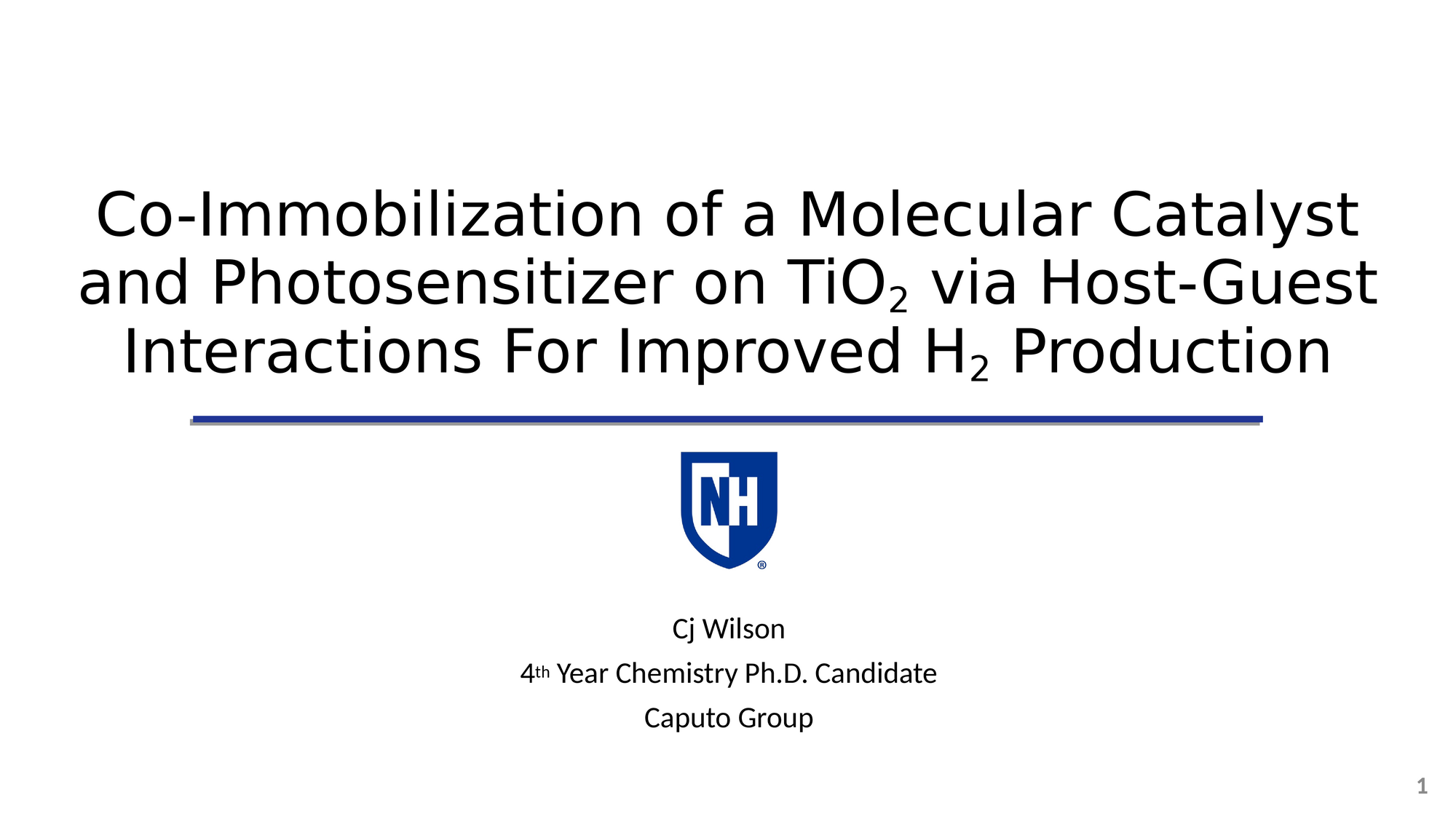Title:
Co-immobilization of a molecular catalyst and photosensitizer on TiO2 via host-guest interactions for improved solar-driven H2 production
Slideshow Presentation
Best viewed by downloading
Preview Converted Images may contain errors

Abstract
To prevent further anthropogenic carbonization of our atmosphere, we must shift away from carbon-based fuels and seek abundant, clean, storable, and energy dense fuels. One of the most promising alternatives to fossil fuels is the solar-driven production of H2 using molecular catalysts coupled to light-absorbing species in hybrid photocatalytic systems. However, such systems (especially those that are covalently-bound to semiconductor nanoparticles) often suffer from catalyst degradation and significant back-electron transfer under the conditions employed. We hypothesize that a supramolecular, non-covalent approach will provide similar benefits to covalent systems while allowing for regeneration after catalyst failure and reduced back-electron transfer through physical charge separation.
In this work, we present the design, preparation, and characterization of an innovative, non-covalent binding strategy using host-guest interactions to co-immobilize molecular catalysts and photosensitizers on the surface of semiconductor nanoparticles for the enhanced sunlight-driven reduction of protons to H2. We have modified both a well-known visible light photosensitizer, [Ru(bpy)3]2+ (Ru), and hydrogen evolution catalyst, Co(dmgH)2PyCl (Co), with several guest moieties that are capable of threading into pillar[5]arene hosts anchored on TiO2 nanoparticles (HF-TiO2). Preliminary results show a 1.5-fold increase in TON for modified Co over the non-functionalized analog. A maximum increase of 11.5-fold was observed over ~20hrs in the presence of an excess of dimethylglyoxime ligand.
Our choice of host and guest strategies allows for great flexibility in this system. In particular, our strategy to modify pyridines (py) and bipyridines (bpy) with guest moieties prior to complexation with a metal center allows us to guest-functionalize any molecular catalyst containing a py or bpy functionality. Future directions for this work include coupling the reduction activity of a hydrogen reduction catalyst or CO2 reduction catalyst with a water oxidation catalyst co-immobilized on the surface of a semiconductor nanoparticle.
Authors
| First Name |
Last Name |
|
Christine
|
Caputo
|
|
Dylan
|
Stolba
|
|
Peiyuan
|
Zhao
|
|
Charles
|
Wilson
|
Leave a comment
Submission Details
Conference GRC
Event Graduate Research Conference
Department Chemistry (GRC)
Group Oral Presentation
Added April 7, 2024, 8:08 p.m.
Updated April 7, 2024, 8:09 p.m.
See More Department Presentations Here